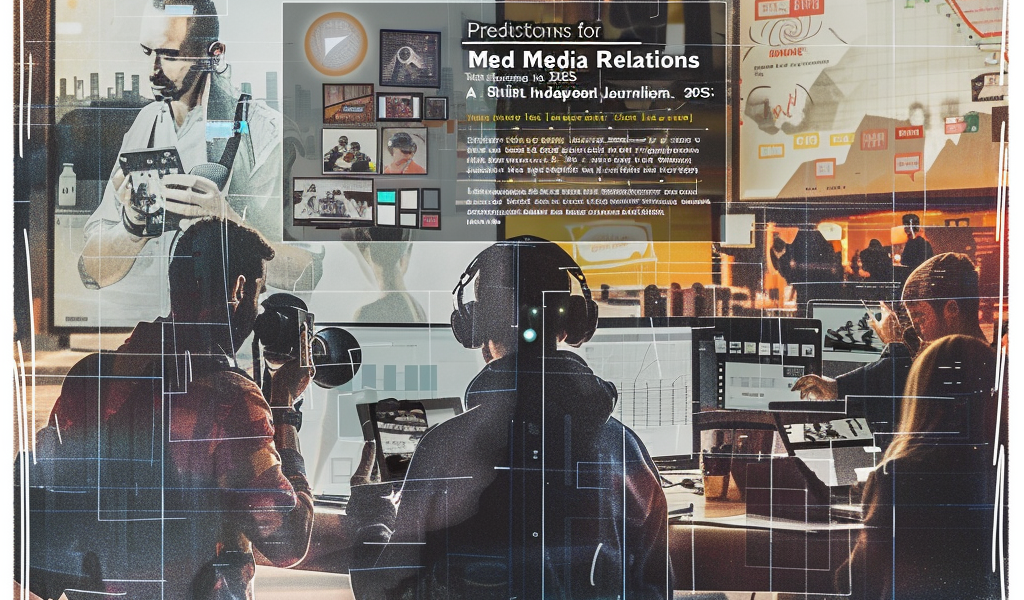Predictions for Media Relations in 2025: A Shift Towards Independent Journalism
As we approach 2025, media relations professionals are gearing up for significant changes in the landscape of journalism and public relations. Insights from industry experts reveal a strong consensus that independent journalism will take center stage, driven largely by the events surrounding the 2024 presidential election. This pivotal moment has led to the maturation of alternative media platforms such as podcasts and Substack, which are increasingly seen as viable sources of news outside traditional media frameworks.
Experts in the field have shared their predictions for the upcoming year, highlighting various trends that will shape media relations. Here’s a summary of their insights:
1. Evolving Definition of Public Relations
Lauren O’Neill, a partner and media health lead at Finn Partners, emphasizes a shift in how public relations is perceived. She suggests that the traditional notion of public relations being synonymous with earned media is outdated. O’Neill predicts that PR specialists will increasingly advise clients on diverse strategies beyond pitching, opting for paid, social, and owned media activations to achieve their goals. This evolution will likely lead to a decrease in formal pitches and an increase in informal conversations with targeted journalists.
2. AI-Driven Media Relations
Kevin Petschow, the corporate communications North America Lead at Nokia, foresees the integration of AI into media relations. He believes that AI technologies will revolutionize the way PR professionals approach journalists. Instead of relying on generic email blasts, AI will facilitate hyper-personalized pitches that cater to the specific interests and engagement patterns of individual journalists, enhancing the effectiveness of media outreach.
3. Navigating Turbulent Times
Jay Weisberger, external communications lead at DPR Construction, anticipates a tumultuous year ahead, particularly regarding the relationship between publishing and editorial teams. He predicts a retreat from controversial reporting, with only well-funded outlets willing to tackle hard truths. This trend could lead to a more cautious approach in media relations, where PR professionals must navigate the challenges posed by polarized viewpoints.
4. Embracing Analog PR
Campbell Levy, founder and CEO of Campstories, suggests a return to traditional methods in a digital age, coining the term “analog PR.” Levy argues that successful PR practitioners will need to create dynamic media relations experiences that engage audiences in tangible ways. This approach may involve more in-person events and creative mailers that allow clients to showcase their expertise. By focusing on the experience economy, PR professionals can stand out in a crowded marketplace.
5. The Creator Economy’s Influence
Levy also points to the growing importance of the creator economy in shaping media relations strategies. He believes that PR professionals will increasingly leverage the skills of content creators to tell compelling stories that resonate with target audiences. This trend will likely lead to more collaborative efforts between PR teams and creators, resulting in innovative campaigns that capture attention.
6. The Importance of Authenticity
As independent journalism gains traction, authenticity will become paramount. PR professionals will need to prioritize genuine storytelling that aligns with the values of their clients and resonates with audiences. This focus on authenticity will not only enhance credibility but also foster stronger connections with both journalists and the public.
7. Shifts in Media Consumption
With the rise of independent journalism, media consumption habits are also changing. Audiences are increasingly turning to niche platforms and alternative sources for news. PR professionals must adapt their strategies to reach these audiences effectively, utilizing social media and digital marketing to amplify their messages.
8. Building Relationships with Independent Journalists
As independent journalists gain prominence, establishing relationships with these individuals will be crucial for PR success. Professionals will need to invest time in understanding the unique perspectives and interests of independent journalists, tailoring their outreach efforts accordingly. This personalized approach will enhance the likelihood of securing media coverage.
9. The Role of Data Analytics
Data analytics will play a significant role in shaping media relations strategies in 2025. By leveraging data insights, PR professionals can better understand audience behavior, preferences, and engagement patterns. This information will allow them to craft more targeted and effective campaigns, ultimately leading to improved outcomes.
10. Emphasis on Visual Storytelling
In an increasingly visual world, the importance of visual storytelling cannot be overstated. PR professionals will need to incorporate rich visual content into their media relations strategies, utilizing infographics, videos, and interactive elements to engage audiences. This emphasis on visuals will help convey complex messages in a more digestible format.
As we move into 2025, the landscape of media relations will continue to evolve, driven by the rise of independent journalism and changing audience expectations. PR professionals must remain agile, adapting their strategies to navigate this dynamic environment successfully. By embracing new technologies, fostering authentic relationships, and prioritizing creativity, they can position themselves for success in the years to come.





